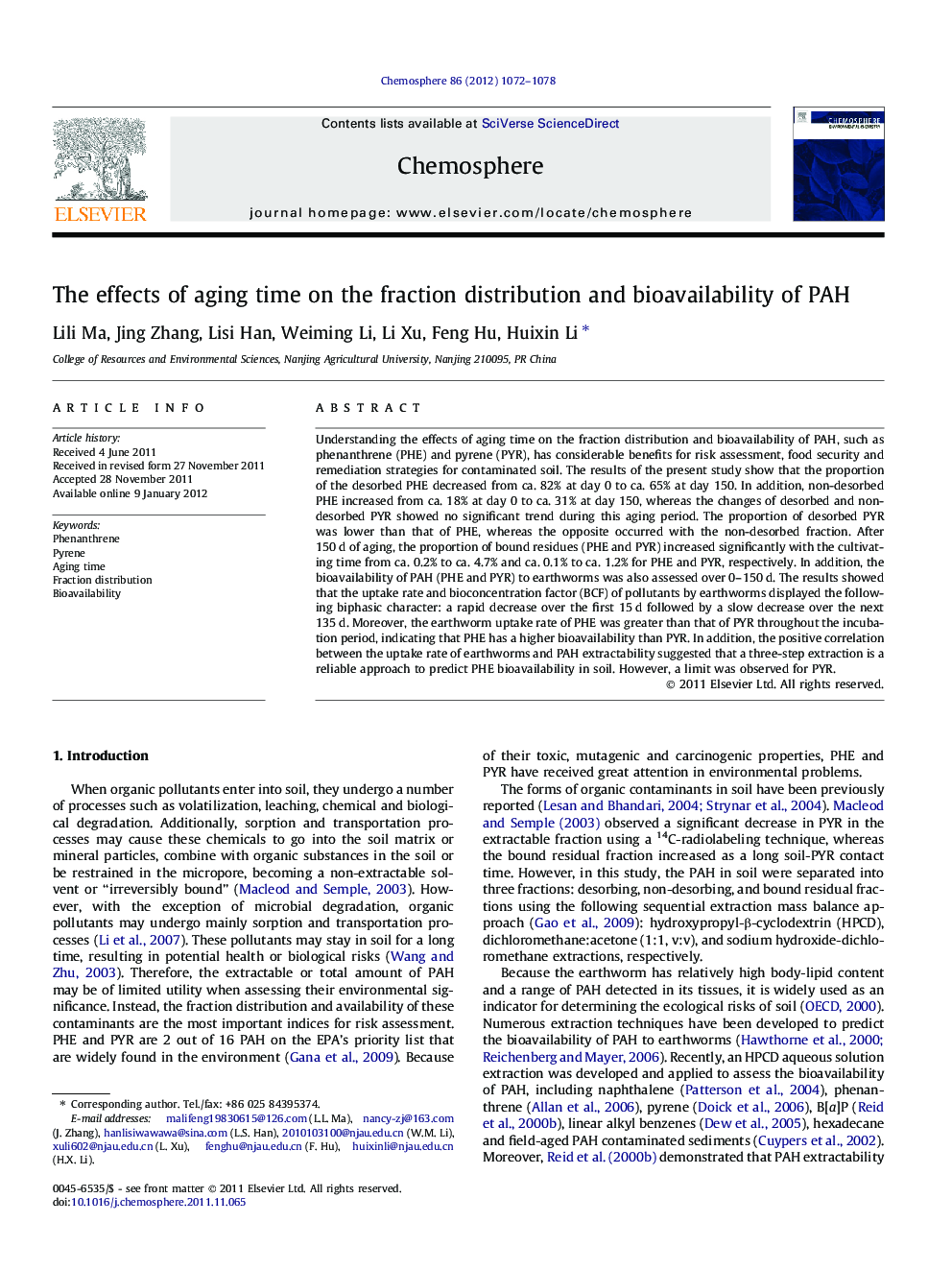| Article ID | Journal | Published Year | Pages | File Type |
|---|---|---|---|---|
| 4410426 | Chemosphere | 2012 | 7 Pages |
Understanding the effects of aging time on the fraction distribution and bioavailability of PAH, such as phenanthrene (PHE) and pyrene (PYR), has considerable benefits for risk assessment, food security and remediation strategies for contaminated soil. The results of the present study show that the proportion of the desorbed PHE decreased from ca. 82% at day 0 to ca. 65% at day 150. In addition, non-desorbed PHE increased from ca. 18% at day 0 to ca. 31% at day 150, whereas the changes of desorbed and non-desorbed PYR showed no significant trend during this aging period. The proportion of desorbed PYR was lower than that of PHE, whereas the opposite occurred with the non-desorbed fraction. After 150 d of aging, the proportion of bound residues (PHE and PYR) increased significantly with the cultivating time from ca. 0.2% to ca. 4.7% and ca. 0.1% to ca. 1.2% for PHE and PYR, respectively. In addition, the bioavailability of PAH (PHE and PYR) to earthworms was also assessed over 0–150 d. The results showed that the uptake rate and bioconcentration factor (BCF) of pollutants by earthworms displayed the following biphasic character: a rapid decrease over the first 15 d followed by a slow decrease over the next 135 d. Moreover, the earthworm uptake rate of PHE was greater than that of PYR throughout the incubation period, indicating that PHE has a higher bioavailability than PYR. In addition, the positive correlation between the uptake rate of earthworms and PAH extractability suggested that a three-step extraction is a reliable approach to predict PHE bioavailability in soil. However, a limit was observed for PYR.
► The effect of aging time on the morphologies of PAH (PHE and PYR) in soils was studied. ► The uptake rate and BCF of earthworm decreased fast followed by slow with ageing. ► The interaction indicated three-step extraction can predict PHE bioavailability and is limit for PYR.
